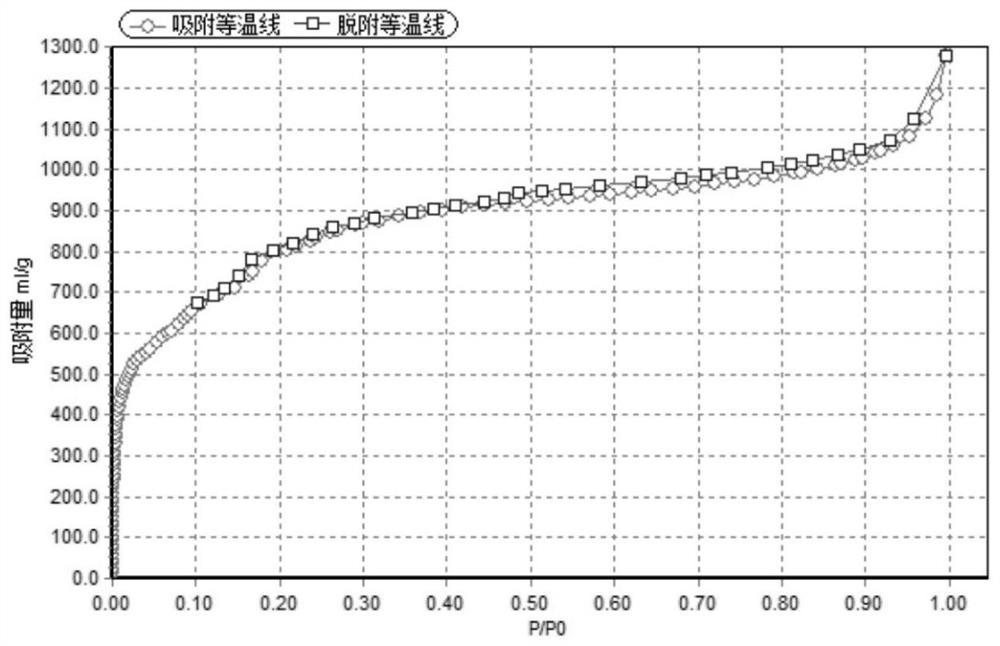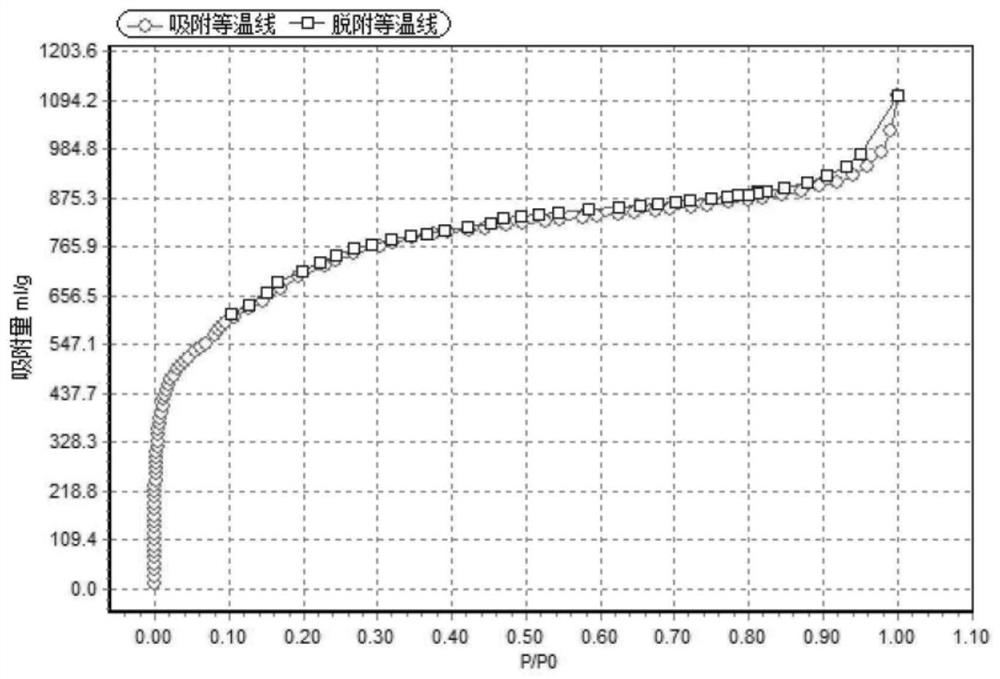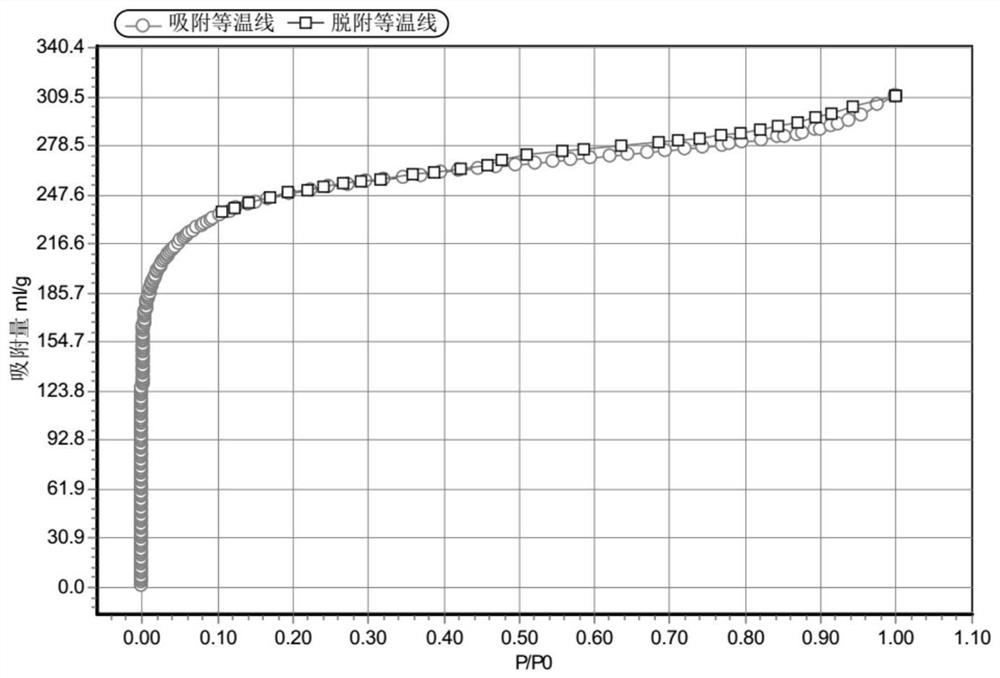Composite material with benzene series adsorption function, preparation method of composite material, method for removing benzene series by using composite material and application of composite material
A composite material, benzene series technology, applied in separation methods, chemical instruments and methods, alkali metal oxides/hydroxides, etc. problem, to achieve the effect of high adsorption capacity of benzene series, stable skeleton structure and strong mechanical strength
- Summary
- Abstract
- Description
- Claims
- Application Information
AI Technical Summary
Problems solved by technology
Method used
Image
Examples
Embodiment approach
[0033] According to one embodiment of the present invention, the method for preparing MIL-101(Fe) comprises: contacting an iron source with terephthalic acid in a solvent for reaction, and sequentially washing and drying the reacted solid. Wherein, the molar ratio of the iron source calculated as Fe to the terephthalic acid may be 1:0.2-1. The amount of the solvent used is such that the content of the iron source calculated as Fe in the contact system is 0.1-0.5 mol / L. The solvent is preferably N,N-dimethylformamide (N,N-dimethylformamide). The iron source may be a common substance capable of providing iron ions, preferably ferric chloride. The contacting conditions may include: a temperature of 100-120° C. and a time of 15-30 hours. More specifically, the method of self-preparation of MIL-101(Fe) is as follows: FeCl with a molar ratio of 1:0.2-1 3 ·6H 2 O. Terephthalic acid is added to the N,N-dimethylformamide (N,N-dimethylformamide) solvent, and the content of the iron ...
preparation example 1
[0060] Weigh FeCl separately 3 ·6H 2 Add O (13.5g, 0.05mol), terephthalic acid (4.2g, 0.025mol) into N,N-dimethylformamide (N,N-dimethylformamide, 300ml) solvent, stir at room temperature uniform. The mixture was transferred to a polytetrafluoro-lined autoclave and heated at 110°C for 20h. Cool to room temperature and centrifuge (3500rpm, 20min) to separate the solid. Wash the solid with N,N-dimethylformamide, deionized water, and ethanol at 60°C for 12 hours, respectively. The solid was heated in a vacuum oven at 150° C. for 12 hours, and the X-ray powder diffraction test proved that the obtained product was MIL-101(Fe) material. The X-ray powder diffraction test conditions are as follows: German Bruker-AXSD8 automatic X-ray diffractometer is adopted, the light source adopts the Cu target Kα radiation of the radiation source, the tube pressure is 30kV, the tube flow is 30mA, and the scanning is carried out continuously at a scanning speed of 2° / min , The scanning range i...
Embodiment 1
[0062] Add the polymer polyethersulfone (PES, 0.45g) into N,N-dimethylformamide (9ml), heat to dissolve at 60°C and stir evenly, add the MIL-101(Fe) powder prepared in Preparation Example 1 (2.55g), stir well. Add the MOF-polymer mixture dropwise (dropping speed 0.025mL / s) to 100ml reverse-phase solvent deionized water / ethanol mixture (volume ratio 10:1) at room temperature, and the composite material formed is statically in the reverse-phase solvent. After keeping it for 1 hour, soak it with fresh deionized water (50ml) for 3 times, and finally soak it with absolute ethanol (50ml) for 2 times, and dry it to get the MOF / PVFM composite material.
PUM
| Property | Measurement | Unit |
|---|---|---|
| melt flow index | aaaaa | aaaaa |
| pore size distribution | aaaaa | aaaaa |
| particle size | aaaaa | aaaaa |
Abstract
Description
Claims
Application Information
 Login to View More
Login to View More - R&D
- Intellectual Property
- Life Sciences
- Materials
- Tech Scout
- Unparalleled Data Quality
- Higher Quality Content
- 60% Fewer Hallucinations
Browse by: Latest US Patents, China's latest patents, Technical Efficacy Thesaurus, Application Domain, Technology Topic, Popular Technical Reports.
© 2025 PatSnap. All rights reserved.Legal|Privacy policy|Modern Slavery Act Transparency Statement|Sitemap|About US| Contact US: help@patsnap.com



